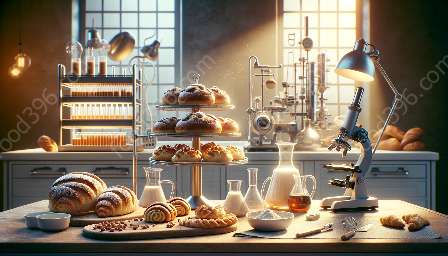Yeast plays a fundamental role in the world of baking, acting as a versatile leavening agent that fosters the rise and structure of various scrumptious baked goods. Understanding the intricate processes that yeast facilitates allows for a deeper appreciation of the science and technology that underpin the art of baking.
The Role of Yeast in Baking
Yeast is a single-celled fungus that is widely used in baking as a leavening agent to help dough rise. When yeast comes into contact with sugars, it undergoes fermentation, producing carbon dioxide gas and alcohol. The carbon dioxide gas gets trapped in the dough, causing it to rise and create an airy, porous structure in the finished product.
This process is crucial in creating light and fluffy bread, cakes, and pastries. Additionally, yeast contributes to the characteristic flavors and aromas found in these baked goods.
Leavening in Baking
Leavening is the process by which dough or batter is aerated to increase its volume and create a soft, light texture. Yeast serves as a popular leavening agent alongside chemical leaveners such as baking powder and baking soda.
The Science of Yeast
Yeast, classified as a eukaryotic microorganism, typically belongs to the species Saccharomyces cerevisiae. It thrives in a warm and moist environment and feeds on sugars to carry out fermentation. As the yeast consumes sugars, it releases carbon dioxide gas and alcohol, imparting the desired rise and flavor to the baked goods.
Fermentation Process
During fermentation, the yeast enzymes break down complex sugars into simpler forms, allowing the yeast to metabolize these sugars and convert them into carbon dioxide and alcohol. This process is crucial in creating the desirable texture and taste in baked goods.
Technology in Baking with Yeast
The use of yeast in baking has evolved significantly over time, with technological advancements enhancing the efficiency and reliability of yeast-based leavening. Yeast production and packaging methods have improved, providing bakers with access to high-quality and consistent yeast products.
Yeast Activation and Proofing
Modern baking techniques often involve activating the yeast by proofing it in warm liquid with a small amount of sugar. This step ensures that the yeast is viable and actively fermenting, leading to successful leavening of the dough.
Bakers also utilize precise temperature control and fermentation chambers to optimize the conditions for yeast activity, resulting in consistent and reliable leavening in their baked goods.
Conclusion
Yeast stands as a remarkable leavening agent in the realm of baking, contributing to the texture, flavor, and overall quality of an extensive array of baked goods. With a deep understanding of the science and technology behind yeast's role in baking, bakers can harness this microorganism's potential to create delectable treats that delight and satisfy.

